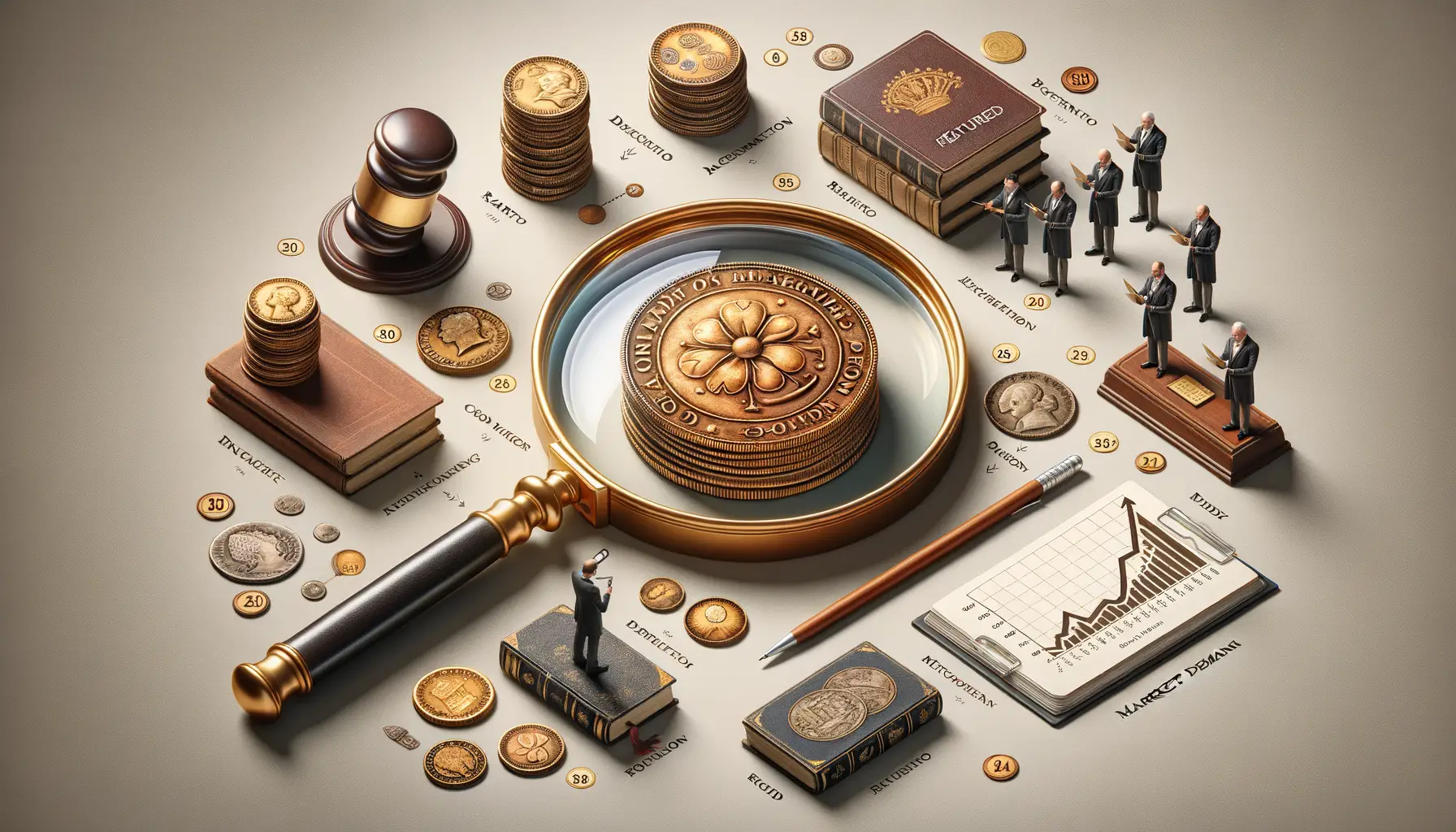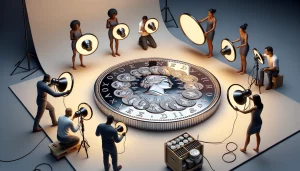Understanding the Value of Rare Coins
What Makes a Rare Coin Worth Its Weight in Gold?
Ever held a coin and wondered if it might be worth more than just its face value? The world of rare coins is like stepping into a treasure chest of stories, history, and dazzling secrets. What makes these tiny pieces of metal command jaw-dropping prices at auctions? It’s not always what you’d expect.
First, there’s the thrill of scarcity. A coin can rise in value simply because there aren’t many left to find. For instance, the elusive 1933 Double Eagle, which fetched nearly $19 million at auction, owes its fame in part to being one of the last gold coins minted before the U.S. banned private gold ownership. While most were melted down, a handful survived, making collectors swoon.
Condition matters, too. Imagine a flawless work of art—you wouldn’t ignore a scuff on the Mona Lisa, would you? Coins graded as “mint condition” or near-perfect can see their value skyrocket. Add historical significance to that equation, like being tied to a pivotal moment or minted during a short reign, and you’ve got an irresistible collectible.
- A fascinating backstory can also propel certain coins into the stratosphere. Think of the Flowing Hair Silver Dollar (1794), the first silver dollar struck by the U.S. Mint—it’s not just metal, but a symbol of a nation’s birth.
- Errors, yes, mistakes! Misprints or misstrikes can transform ordinary coins into priceless oddities. Collectors love quirks like misspelled words or upside-down designs.
Rare coins are more than currency—they’re tangible fragments of our shared human journey. From their shimmering surfaces to their untold tales, they carry weights of wonder far beyond their physical heft.
A Closer Look at Record-Breaking Coin Auctions

The Thrill Behind Multi-Million-Dollar Coin Bids
Imagine a room pulsing with anticipation, where the clink of tradition meets the hammer of destiny. That’s the atmosphere at record-breaking coin auctions—a mix of history, adrenaline, and fierce competition. These are not just events; they’re modern-day treasure hunts, where collectors and investors battle it out to claim pieces of the past.
Take for instance the legendary 1794 Flowing Hair Silver Dollar. When this coin shattered records at over $10 million, the world wasn’t just buying silver—it was buying a piece of America’s birth story. Auctions like these are where ordinary coins morph into legends, unlocking the hidden obsession of bidders determined to leave their mark on numismatic history.
What Makes These Auctions Unforgettable?
A successful auction is built on dazzling moments. Here’s what adds fire to the bidding wars:
- Rarity: Coins with limited mintage or historical anomalies dominate the stage.
- Condition: A pristine coin can elevate its value tenfold.
- Story: A rich narrative, like a coin surviving centuries in royal collections, creates allure.
It’s not just money changing hands—it’s legacy, drama, and the undeniable pull of owning something truly unique.
List of the Most Expensive Coins in History

Coins That Stole the Spotlight at Auction Houses
Step into the dazzling world of rare coins, where history, artistry, and jaw-dropping price tags collide! Some coins are worth more than luxury mansions or superyachts. What makes them so special? Let’s uncover some iconic examples that have made collectors gasp—and auction hammers slam down with a bang.
- The 1794 Flowing Hair Dollar: Often whispered about in hushed tones, this coin sold for an eye-watering $10 million. Believed by some to be the first silver dollar minted by the U.S., its design is a poetic dance between early American dreams and exquisite craftsmanship.
- The 1933 Saint-Gaudens Double Eagle: You could practically hear the auction room holding its breath before this masterpiece sold for $18.9 million in 2021. A tale of elegance, mystery, and prohibition-era intrigue, it carries an almost mythical status among enthusiasts.
More Legends Worth Their Weight in Gold (Literally!)
Let’s not forget coins like the legendary Edward III Florin (1343), which fetched nearly $6.8 million. Why? It’s one of only three known surviving specimens! And then there’s the striking Brasher Doubloon from 1787, created by a New York goldsmith, which has repeatedly shattered records. Whether it’s their rarity, beauty, or stories, these coins prove one thing: they’re no ordinary pocket change!
Factors That Drive Coin Prices at Auctions

What Makes a Coin’s Value Skyrocket?
Have you ever wondered what it is about a small, unassuming coin that sends bidders into a frenzy, driving prices through the roof? Well, there’s no single answer—it’s like the perfect storm of history, rarity, and a sprinkle of market obsession. Let’s unravel this mystery!
First, there’s rarity. Coins that were minted in small quantities or ones that survived against all odds are a collector’s dream. Think of it like finding a four-leaf clover—but this one could be worth millions.
Then, there’s the story. And oh, do coins hold stories! A coin carried by a Roman emperor or unearthed from a shipwreck has instant allure. It’s not just metal; it’s a time-traveling relic.
Condition matters too. In the numismatic world, “mint state” isn’t just fluff—it can multiply a coin’s value tenfold. Imagine untouched brilliance shining through centuries of history.
Other key players include:
- Market trends: Demand for certain eras or types of coins can surge unpredictably.
- Provenance: A coin with famous former owners or an auction house pedigree can captivate wallets and imaginations alike.
Coins may be small, but they can carry a universe of factors that set collectors’ hearts racing—and drive prices higher than anyone imagined.
Tips for Collectors and Investors in Rare Coins

Uncovering the Secrets of Smart Coin Investments
Whether you’re chasing that elusive glimmer of history or strategizing for long-term gains, diving into the world of rare coins is equal parts passion and precision. But where do you start? Here are some golden nuggets of advice:
- Know your history: Coins are more than shiny disks—they carry the weight of empires, revolutions, and royal dynasties. A 1933 Double Eagle isn’t just valuable; it’s a snapshot of economic turmoil and a fight with the U.S. government over private gold ownership.
- Condition counts: Collectors live by the phrase “grade is king.” A pristine coin with razor-sharp details can fetch exponentially higher prices. Learn to discern between a “Fine” and a “Mint State” condition—it could save or make you thousands.
- Network wisely: Rare coin auctions aren’t just transactions; they’re communities. Build relationships with dealers, attend trade shows, and don’t shy away from joining collector groups online or in person.
Warning Signs: Avoiding Costly Mistakes
The thrill of acquiring rare coins can sometimes eclipse judgment, but staying sharp is crucial. Watch for these pitfalls:
– Too good to be true? If someone offers you an 1804 Silver Dollar for pocket change, run the other way. Counterfeits are everywhere. Always buy from reputable sources.
– Skipping the research: Imagine buying a masterpiece painting without knowing if it’s genuine. The same applies here. Dive deep into provenance, auction records, and expert opinions before sealing the deal.
– Overlooking storage: Don’t let environmental damage wreck your investments. Humidity, acid-rich materials, and improper handling are coin killers. Use airtight slabs and proper tools to preserve their beauty.
Investing in rare coins is a delicate dance between passion and caution. With knowledge and care, you’ll soon be holding pieces of history that won’t just enrich your portfolio—they’ll leave you in awe.












